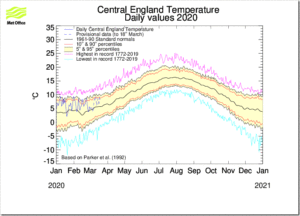by K. Richard, Oct 22, 2020 in NoTricksZone
European winter temperature variability is “dominated” by the North Atlantic Oscillation (NAO), which is, in turn, modulated by solar activity.
Even proponents of anthropogenic global warming (AGW) agree natural processes (AMO, NAO, ENSO, solar forcing, volcanism) drive temperature variability. But they insist the rising temperature trend is human-caused.
So if we don’t have a regional upward trend, is the non-warming natural or anthropogenic?
Lüdecke et al., 2020 find temperatures across Europe have been oscillating, not rising in linear fashion, for the last century. The timings of the temperature undulations correspond quite closely to natural ocean cycles (the NAO and AMO). The authors detail a non-linear and indirect solar activity impact on these ocean cycles, and ultimately to the European climate.
…


